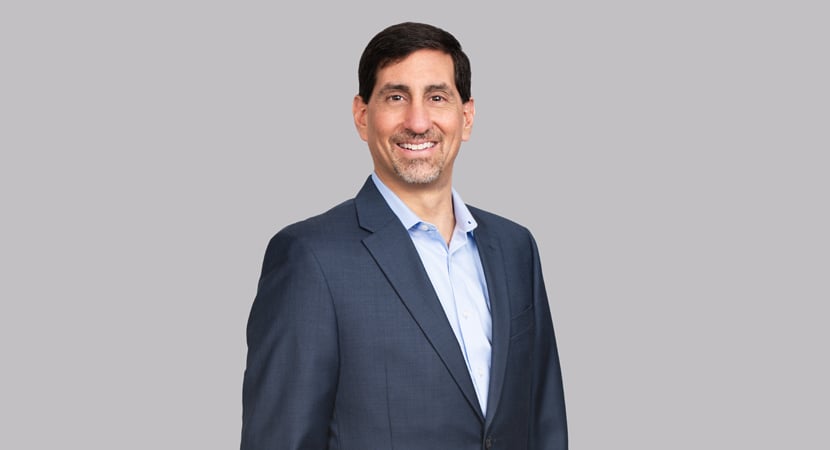In a follow-up to the SECURE Act of 2019, the enactment of the SECURE 2.0 Act of 2022 made several additional revisions to the required minimum distribution (RMD) rules applicable to retirement plans and accounts. The more notable changes include:
Increased Age for RMDs. As of January 1, 2023, SECURE 2.0 increases from 72 to 73 the triggering age for starting RMDs. If you turned 72 in 2022, you were still required to take your first RMD by April 1. The age threshold will ultimately increase to 75, beginning on January 1, 2033.
Reduction in Penalty for Failure To Take RMDs. Currently, a steep penalty applies for failing to withdraw a full RMD by its due date, equal to a 50% excise tax on the difference between the RMD and the actual amount taken. Effective this year, SECURE 2.0 reduces this penalty to 25%, or 10% if the RMD is timely corrected (typically within two years).
Surviving Spouse’s Election for Treatment as a Deceased Employee. Beginning in 2024, SECURE 2.0 provides an alternative to a spousal rollover of an inherited retirement account by permitting the surviving spouse (if the sole designated beneficiary) to elect to be treated as a deceased employee for RMD purposes. With this election, if an employee died before being required to take RMDs, the surviving spouse can delay the start of RMDs until the deceased employee would have reached the appropriate RMD age or until the surviving spouse reaches the appropriate RMD age, whichever is more beneficial. The election also can allow the surviving spouse to use a more favorable RMD life expectancy table to calculate distributions over their lifetime.
RMD Rules for Special Needs Trusts. The SECURE Act of 2019 limits the ability of beneficiaries of inherited retirement accounts to stretch RMDs over their lifetimes. An exception applies for certain “eligible designated beneficiaries,” which include a disabled or chronically ill individual or a properly structured special needs trust (SNT) for that individual’s benefit. The exception would not apply, however, if the SNT named a charity as the remainder beneficiary to receive the trust assets after the disabled individual’s death. Effective this year, SECURE 2.0 amends this rule by permitting an SNT to have a charity as its remainder beneficiary without causing the loss of the RMD stretch benefits, so long as it is a qualified charity other than a donor-advised fund.
RMDs and Roth 401(k)s. Currently, Roth 401(k) accounts in qualified employer plans are subject to RMDs, while individual Roth IRAs are not. Beginning in 2024, SECURE 2.0 eliminates RMDs for qualified employer Roth plan accounts, including for those participants who already started taking lifetime RMDs (although an RMD attributable to 2023 but payable in 2024 must still be taken).
Rollovers of 529 Plans to Roth IRAs. While not RMD related, beginning in 2024, SECURE 2.0 will permit rollovers of qualified tuition plan accounts (i.e., 529 plans) to Roth IRA accounts in limited circumstances. Several requirements apply, including that the 529 plan must have been maintained for at least 15 years, the Roth IRA account must be in the name of the 529 plan beneficiary and the rollover amount cannot include funds contributed to the 529 plan less than five years before the rollover. A rollover also is subject to the annual contribution limits for Roth IRAs in the year made, and no more than $35,000 in total may be rolled over during the lifetime of the 529 plan beneficiary. While limited, this new rule offers an option for moving excess 529 plan assets out of the plan account without triggering potential income tax or a 10% penalty on the transfer as a nonqualified withdrawal from the 529 plan.
Increased Age for RMDs. As of January 1, 2023, SECURE 2.0 increases from 72 to 73 the triggering age for starting RMDs. If you turned 72 in 2022, you were still required to take your first RMD by April 1. The age threshold will ultimately increase to 75, beginning on January 1, 2033.
Reduction in Penalty for Failure To Take RMDs. Currently, a steep penalty applies for failing to withdraw a full RMD by its due date, equal to a 50% excise tax on the difference between the RMD and the actual amount taken. Effective this year, SECURE 2.0 reduces this penalty to 25%, or 10% if the RMD is timely corrected (typically within two years).
Surviving Spouse’s Election for Treatment as a Deceased Employee. Beginning in 2024, SECURE 2.0 provides an alternative to a spousal rollover of an inherited retirement account by permitting the surviving spouse (if the sole designated beneficiary) to elect to be treated as a deceased employee for RMD purposes. With this election, if an employee died before being required to take RMDs, the surviving spouse can delay the start of RMDs until the deceased employee would have reached the appropriate RMD age or until the surviving spouse reaches the appropriate RMD age, whichever is more beneficial. The election also can allow the surviving spouse to use a more favorable RMD life expectancy table to calculate distributions over their lifetime.
RMD Rules for Special Needs Trusts. The SECURE Act of 2019 limits the ability of beneficiaries of inherited retirement accounts to stretch RMDs over their lifetimes. An exception applies for certain “eligible designated beneficiaries,” which include a disabled or chronically ill individual or a properly structured special needs trust (SNT) for that individual’s benefit. The exception would not apply, however, if the SNT named a charity as the remainder beneficiary to receive the trust assets after the disabled individual’s death. Effective this year, SECURE 2.0 amends this rule by permitting an SNT to have a charity as its remainder beneficiary without causing the loss of the RMD stretch benefits, so long as it is a qualified charity other than a donor-advised fund.
RMDs and Roth 401(k)s. Currently, Roth 401(k) accounts in qualified employer plans are subject to RMDs, while individual Roth IRAs are not. Beginning in 2024, SECURE 2.0 eliminates RMDs for qualified employer Roth plan accounts, including for those participants who already started taking lifetime RMDs (although an RMD attributable to 2023 but payable in 2024 must still be taken).
Rollovers of 529 Plans to Roth IRAs. While not RMD related, beginning in 2024, SECURE 2.0 will permit rollovers of qualified tuition plan accounts (i.e., 529 plans) to Roth IRA accounts in limited circumstances. Several requirements apply, including that the 529 plan must have been maintained for at least 15 years, the Roth IRA account must be in the name of the 529 plan beneficiary and the rollover amount cannot include funds contributed to the 529 plan less than five years before the rollover. A rollover also is subject to the annual contribution limits for Roth IRAs in the year made, and no more than $35,000 in total may be rolled over during the lifetime of the 529 plan beneficiary. While limited, this new rule offers an option for moving excess 529 plan assets out of the plan account without triggering potential income tax or a 10% penalty on the transfer as a nonqualified withdrawal from the 529 plan.
-
 Senior Counsel
Senior Counsel -
 D.C. Trusts & Estates Practice Leader
D.C. Trusts & Estates Practice Leader
)